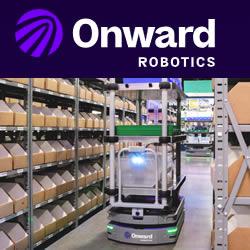Ford, U-M Accelerate Autonomous Vehicle Research with Ford Researchers In-House at New Robotics Lab on U-M Campus
Canada Is Using Lasers and Robots to Study a Mysterious Curling 'Frankenbroom'
A.I. and robotics could replace 6% of U.S. jobs by 2021
Robophysics: Robots in Motion
Super Smart Society: Society 5.0
Swarms of Robots Manage to Not Run Into Each Other
LG Electronics To "Aggressively Invest" In Robotics
Sony company chief hints at company's plans to head into robotics and AI
Chinese robotics makers feast on government subsidies
Telesurgery and New Robotic Surgery Training Curriculum
The legacy of Willow Garage…The "PARC" for robotics
Dexmo Robotics has created a mechanical exoskeleton glove for VR use
See what this squishy octopus-inspired robot can do
Collaboration and Integration are Crucial for the Growth of the Robotics Industry
Eric the Robot - the Start of the Inevitable Future of Humans and Robots Living Harmoniously
Records 1186 to 1200 of 1432
First | Previous | Next | Last
Mobile Robots - Featured Product

